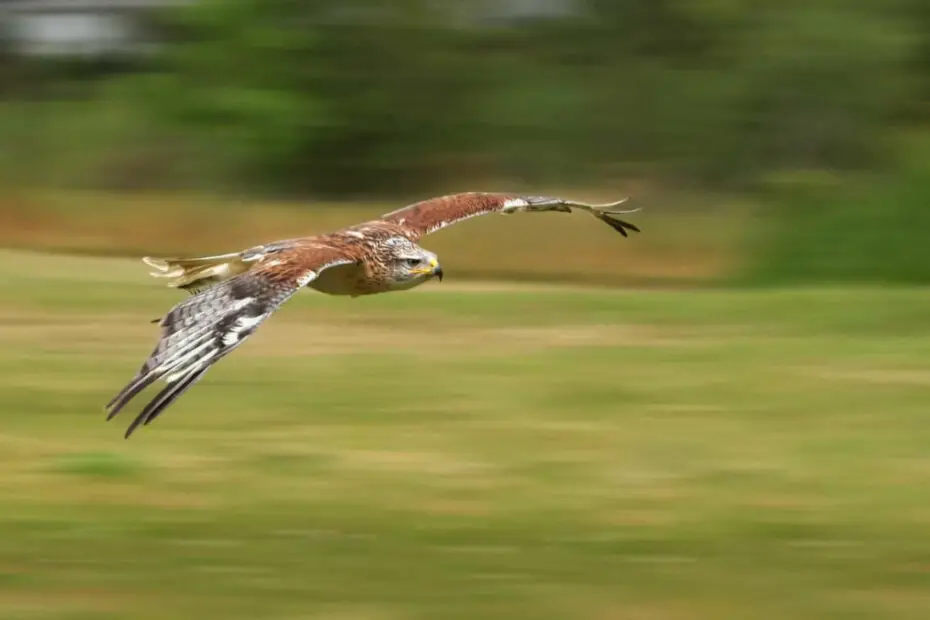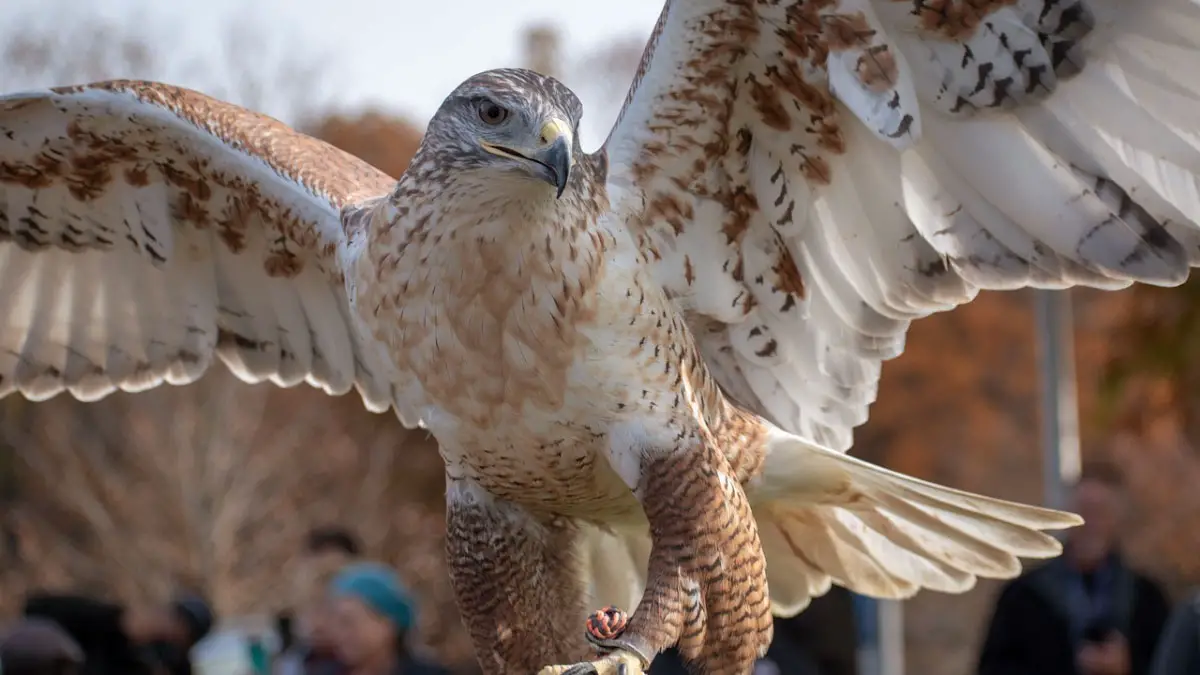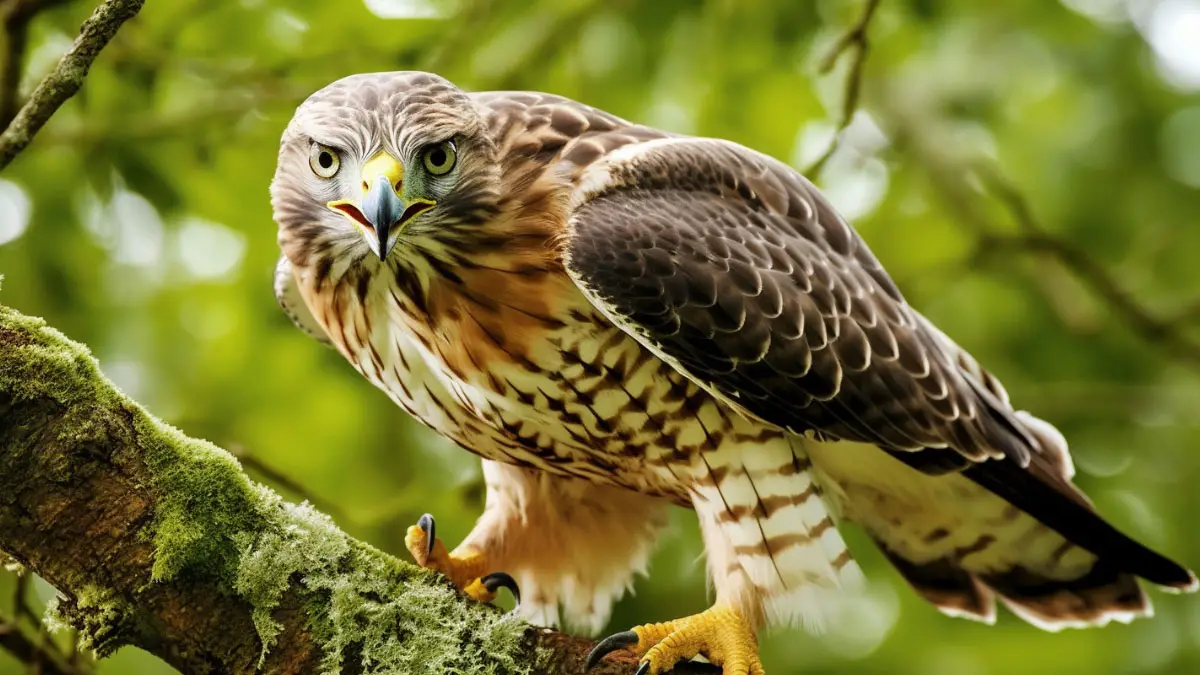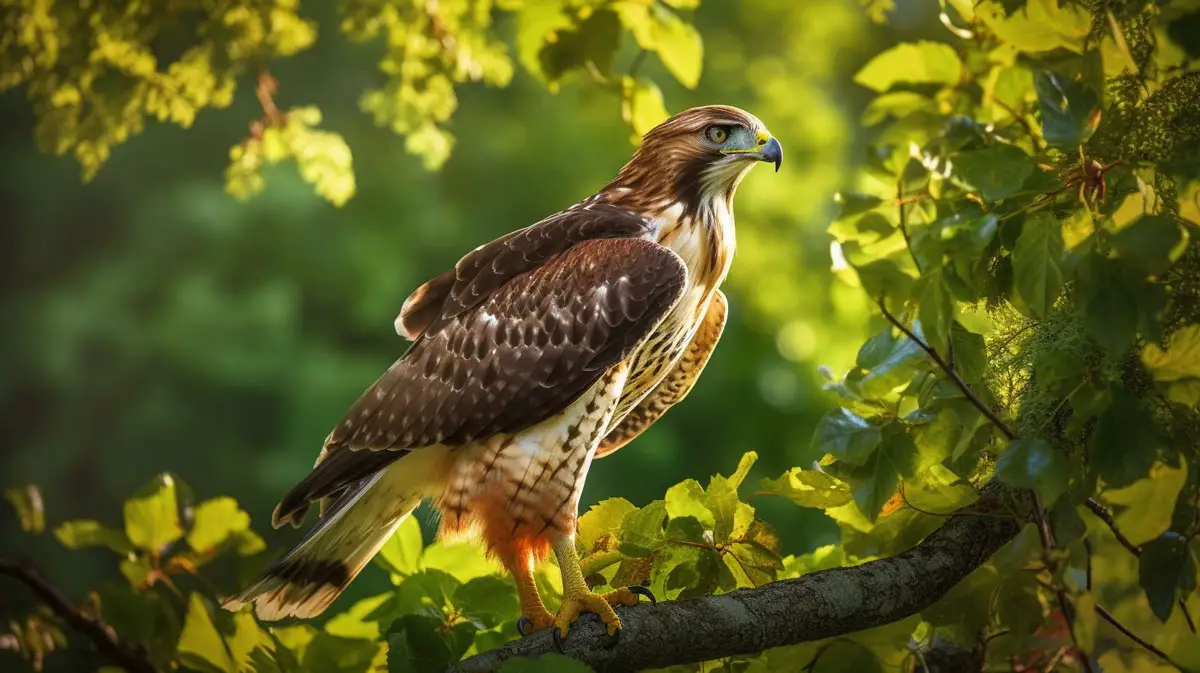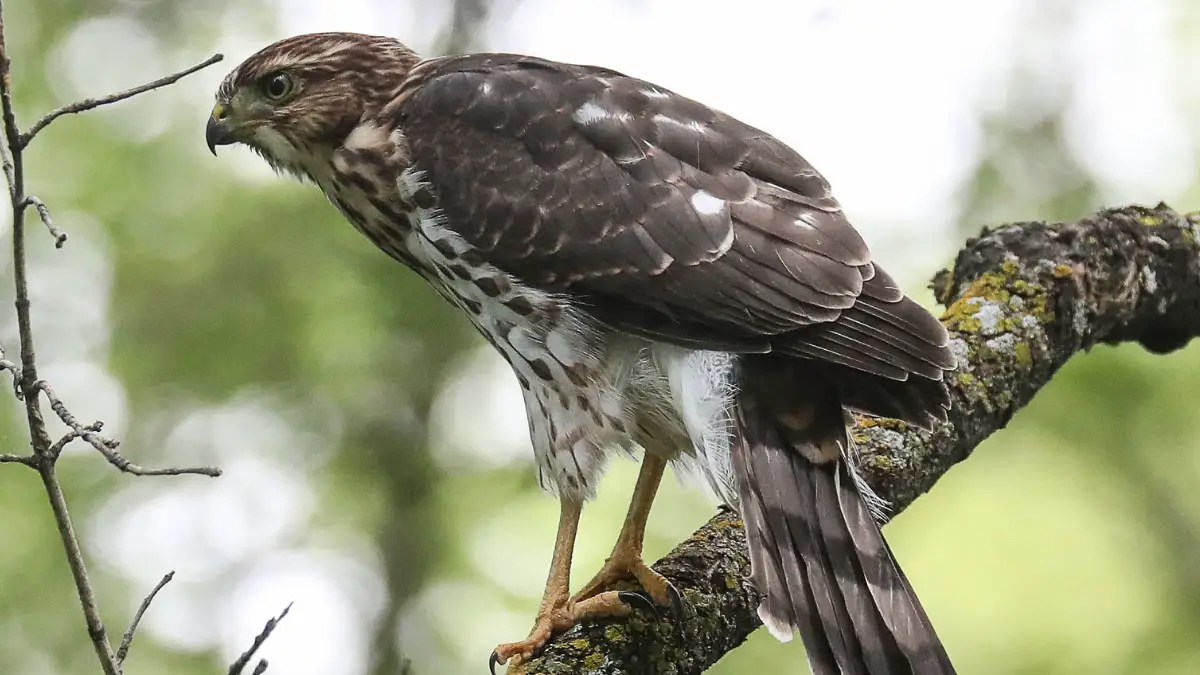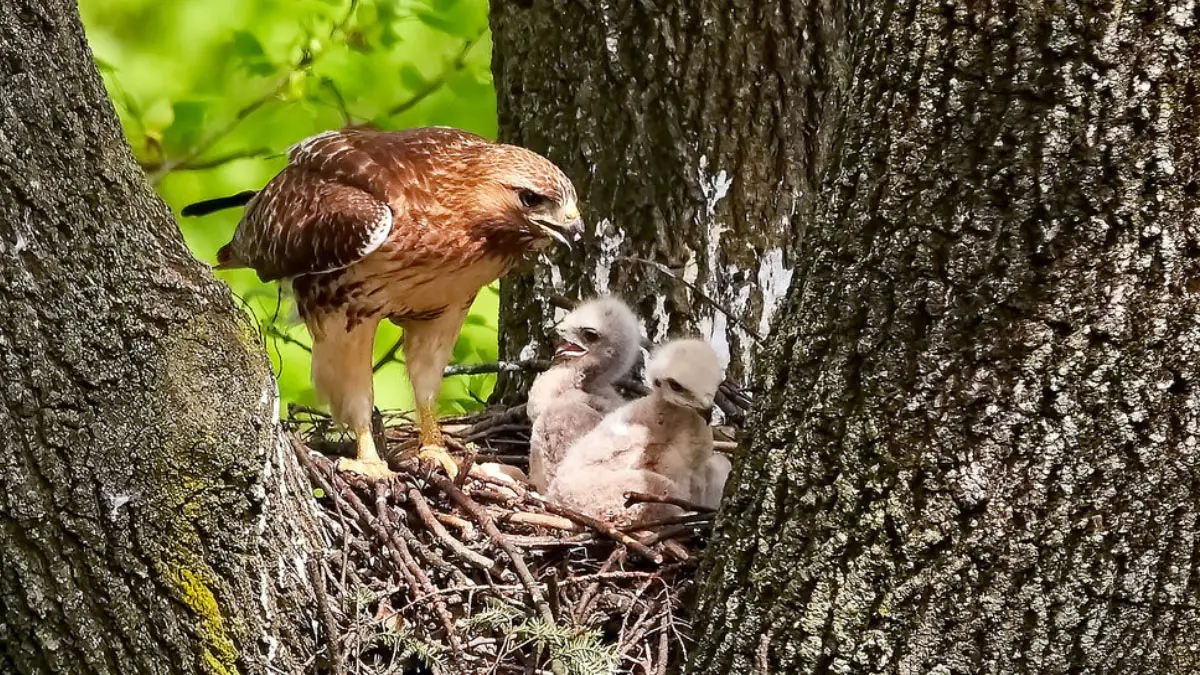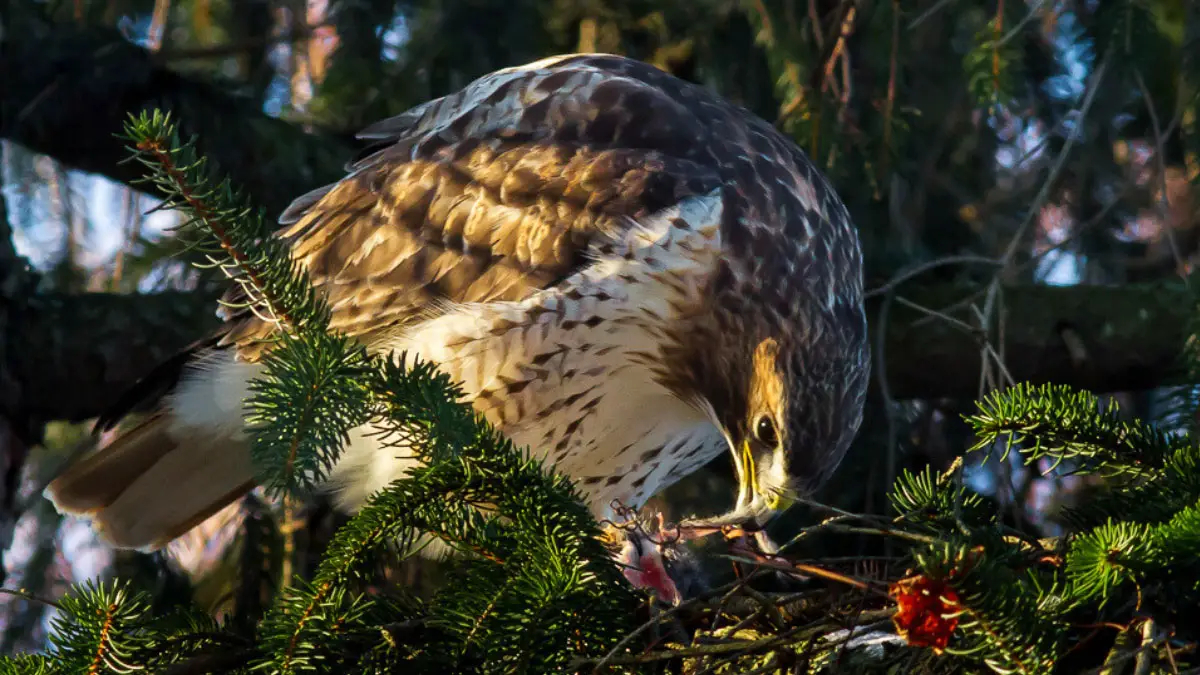Hawks are birds of prey known for their great speeds while chasing and hunting. There are over 200 species, the common ones including sharp-shined and gray hawks. They appear in all continents except Antarctica, which is too cold for most living creatures.
Their characteristics include strong hooked beaks that they use to tear flesh. They also possess sharp and curved claws used to grab prey. However, their popular character is in flight, and they’re known as swift fliers.
Hawks should be among the birds observed and studied by any bird enthusiast or researcher. They vary in behaviors and social interactions, which are fun topics to explore and understand. Also, their behaviors affect various things, including their flocking capabilities.
The article acts as a guide to hawk behaviors, including their social and flying behaviors. Also, it covers information on their group behaviors and shares tips for birdwatching. Therefore, read on to learn more.
Hawks’ Social Behavior
The social behavior of hawks vary with species, where most are known to be social and live in pairs, especially during their breeding season. A large percentage of them are also monogamous and mate for life with their partners. Some may also live in larger flocks or kettles.
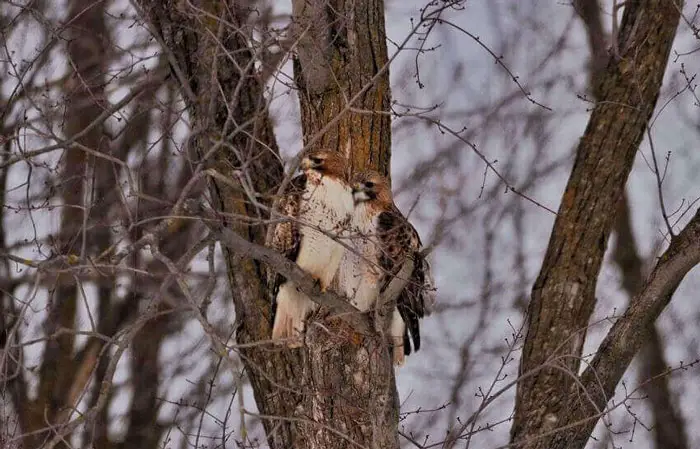
However, these raptors are also territorial and do not entertain other species in their territory. The behavior is common when they are preparing for nesting. It’s unlikely to see two hawks sitting together unless they’re a pair or in the courting process.
These birds of prey communicate through shrilling or screeching, depending on the message. A screech is often when a hawk spot another in its territory. A call or a shrill chwirk is often made when engaging in the aerial displays courtship dance.
However, not all share those behaviors since some will hunt and prepare nests together. Some are also known to feed an injured member until it recovers.
Hawks Social Activities
As stated above, some species are social and don’t only live as a pair but also in flocks. Some of these species include the rough-legged, Harris, and Swainson’s hawks, all found in North America.
These birds often hunt together where they surround the prey by circling it. Some improvise flush and ambush tactics, a tactic where one group scares prey animals while others wait to chase and catch it. Their bird communication skills come in handy during these tactical skills.
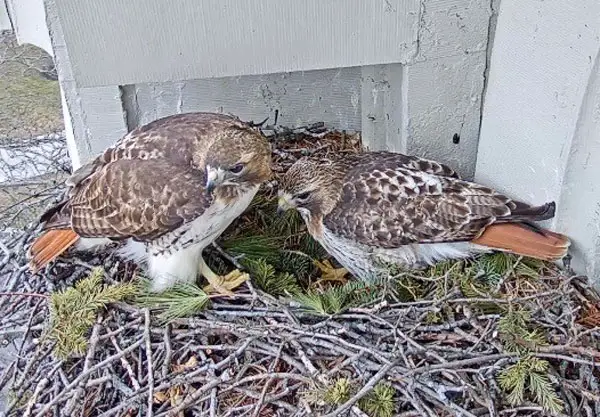
These birds may also take turns chasing some first-running prey, like rabbits. Harris hawks are among predator birds using flush and ambush tactics. They also do group chasing and each bird takes turns chasing after a running prey. Group hunting has proven more successful in desert areas.
Other than cooperative hunting, these birds also engage in communal roosting. This communal activity involves several birds helping each other in building nests, where they roost together.
The birds work together to search for nesting materials and help set them up in a nest. They can build nests on trees or cacti and up to three birds will tend to a single nest.
In case one of the birds in the flock gets injured, the others often provide it with food until it recovers. Electrocution through exposed electrical wires is a common cause of injury to these birds, some lose limbs, and others die.
Research suggests that electrocution is a contributing factor in the endangerment of some species.
Territoriality and Aggression Among Hawks
As mentioned in the overview, some hawk species are territorial and often react aggressively toward other species. The red-tailed hawk and Cooper’s hawk are two common territorial birds. Like most species, the females are larger and more aggressive.
Hawks don’t mark their territory, but they always know how large it is. They often react by screeching at the intruder while flying close to them. If the intruder doesn’t get the message, they use their talons to attack.
However, the territorial behavior is not in all species as some, like the Ferruginous hawk, can perch near each other.
Hawks’ Social Behavior Compared to Other Birds
Social behaviors of hawks, like group hunting, have been observed in several other predator birds, like Aplomado Falcons. Peregrine falcons and Golden eagles are also known to hunt in pairs.
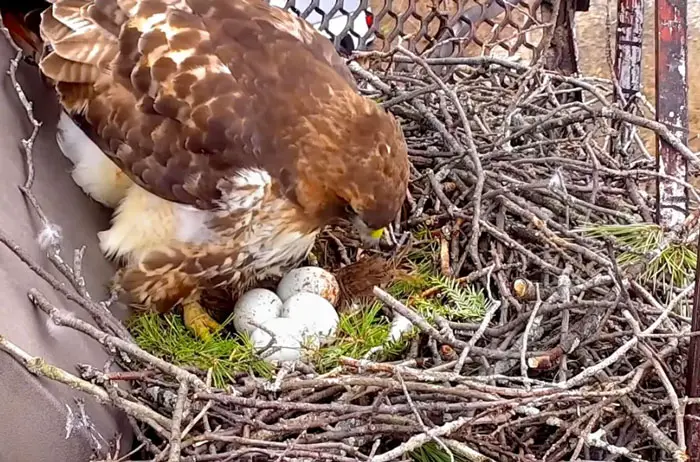
Also, their territoriality during breeding season is in eagles who engage in battles. The eagle fights are so bad that they cause injuries and death, with Florida reporting increased eagle mortality due to these fights.
Hawks’ Flying Behavior
Hawks are great fliers, with their flying speed being among their greatest strengths when hunting prey. They have a wingspan ranging from 50 cm to 1.5 m (19.5 – 59 inches), depending on the species.
Red-tailed hawks, for instance, are among the species with larger wingspans with lengths up to 1.5 meters. They are also capable of fast speeds of up to 120 mph, recorded on Red-tailed hawks.
These predator birds also possess streamlined bodies, which help them attain high speeds. Like other birds, their main limb bones are hollow, which helps keep them lighter and capable of flying.
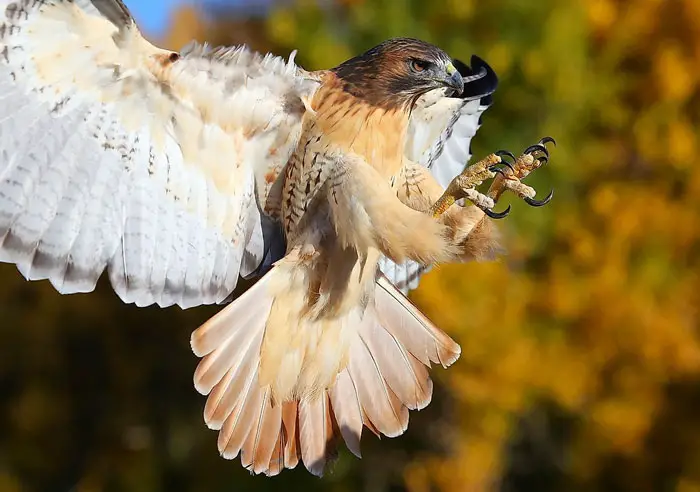
Hawks Flying Characteristics
One of the common questions bird lovers ask is, do hawks fly in flocks? Yes, some hawk species fly in flocks, mostly those that are less aggressive and territorial. Some, like Swainson’s hawks and Broad-winged Hawks, gather in large numbers during migration.
Some, like Red-tailed and zone-tailed hawks fly alone when searching for prey. These lone-flying species live in parts with more prey animals. The juveniles not yet at the courting age, which according to their breeding biology is usually three years, fly alone.
Usually, the adult birds fly in various patterns when hunting and migrating. For instance, while searching for prey, they flap three times and soar, and then repeat the pattern. The flaps are more frequent when the birds are chasing prey after diving. During bird migration, they spread their wings and flaps continuously. However, when soaring in flocks, the birds only spread their wings and rotate in circles.
How Hawks Use Thermal Currents and Wind Pattern To Fly
Often, people refer to groups of flying hawks as kettles, even though they’re popularly known as flocks. This is because of the way they swirl and spiral while taking advantage of thermal currents. They spread their wings to trap as much current as possible and rise higher.
Thermal currents are warm air rising from the ground due to its denser mass. In locations where these currents are experienced, birds, mostly predatory ones, like hawks, take advantage of them to attain great heights. The behavior of using these currents is called thermal soaring.
Also, the wind pushed on objects like ridges creates an upward drift that they use to soar. These patterns are the reasons you may spot birds soaring by a mountain range. Once high, the birds can do better surveillance and dive. The higher the bird flies, the faster the dive will be.
Hawks during migration, take advantage of wind direction. The hawk species that migrate often move in the direction the wind flows. If winds are strong or against them, they fly at night, when the winds are light.
Comparing Hawks Flying with Other Species
Hawks’ are similar to most predatory birds in terms of flying speed. The Golden Eagle and Saker Falcon can attain up to 200 mph dive speeds during a dive. The Peregrine falcon holds the record of the fastest bird in the world, with up to 240 mph velocity.
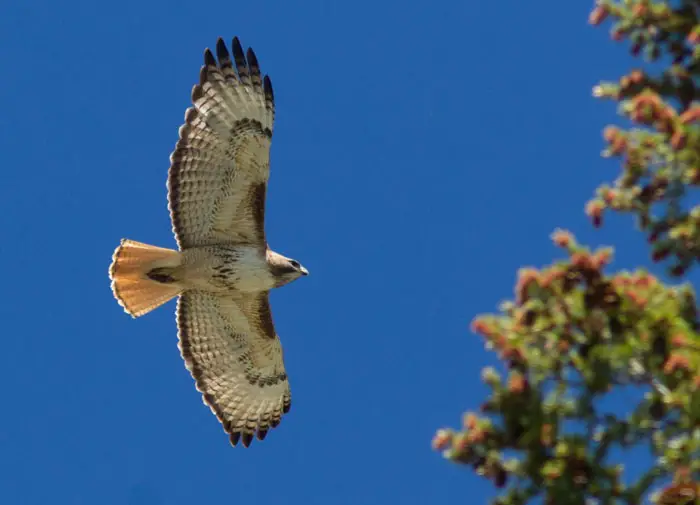
However, while some birds use the height to fly further, hawks use the height for surveillance. Falcons are the predator birds the hawks resemble most as they also use the soaring height attained to dive.
Hawks’ Group Behavior
Often, when people learn about the hawk’s group flying behaviors, they wonder, how do hawks fly together? They only fly together when there’s a need and a reason to do it.
One of the reasons these birds fly in groups is when they’re hunting. However, this happens only in social species and not the territorial ones, unlike the Red-tailed and Red-shouldered hawks.
Also, some Hawks fly together when migrating. The Swainson’s hawk in North America migrates to Argentina to overwintering grounds. Also, some Northern Goshawks migrate in colder seasons to warmer places with adequate food.
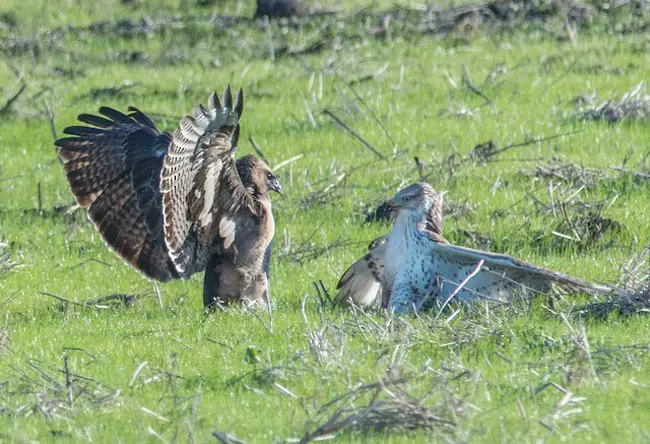
Types of Hawk Groups
While hawks can live in groups, the types of groups vary across the species. The groups include;
1. Pairs and Families
Most species, especially those with territorial birds, only stay in pairs in the breeding season. However, they also live in families and take care of their young until they’re ready to leave the nest.
Since most species are monogamous, including the red-tailed hawk, they remain as pairs waiting for the next breeding season. Juvenile hawks live with their parents for up to 16 weeks, after which they hunt for themselves.
2. Groups and Flocks
Some also live in groups of up to four, a common behavior with the Harris hawks. Their young remain in the group until they’re up to three years when they mature. During that time, they help the parents raise broods.
Others live in flocks, a common group behavior in migratory birds. Broad-winged hawks are among the long-distance migratory birds that flock in hundreds and thousands. These birds winter in Brazil and travel to Canada, where they breed.
Benefits of Hawks Flying in Groups
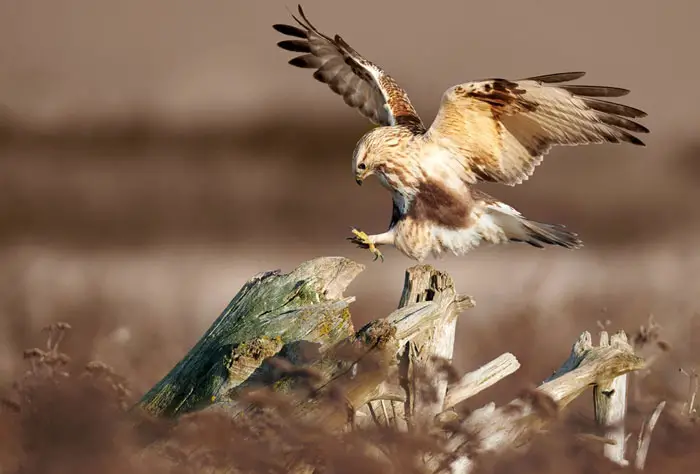
Those that fly in groups have multiple benefits. They include the following:
1. Successful Hunting
Moving as kettles is usually advantageous as the birds are more successful when hunting. The ability to circle the prey or use various tactics to scare and catch prey makes hunting easier. Also, these birds take turns chasing a prey animal, which can be exhausting for a single hawk.
2. Protection
Birds living in groups can deter invading hawk species more successfully when compared to a single hawk. Also, these birds can protect their eggs more successfully from other predator birds like eagles.
3. Migration
Birds who migrate in groups conserve energy because when the birds in the front flap their wings, the others get an uplift. The large numbers also allow them to discover thermal currents faster. Other than thermal currents, they also use mountain updrafts to gain height.
But why do some hawks fly alone? Despite these advantages and benefits of flying together, there are some that live alone. Mostly, this happens when they’re still not of the mating age, where they court and pair.
Comparing Hawks Group Behavior with Other Birds
Hawks have several similarities with most flocking birds. For one, the unity the birds get when activities like hunting and nest building are observed in some flocking birds.
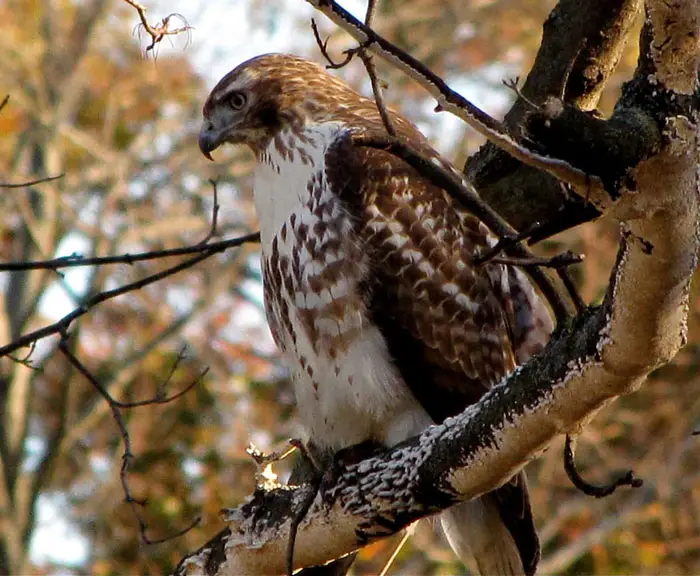
Eleonora’s Falcons and bald eagles are among the birds that share this flocking behavior and hunt together. Eleonora’s falcons h together by creating a barrier to intercept migrating birds. Some falcons also live in groups of families, with up to six birds.
Observing Hawks in Group
Observing these birds in groups for researchers, bird enthusiasts, bird organizations, etc., is crucial for knowledge gathering and wildlife management.
Here are some precise tips for birdwatching, the best place and time, and ethical and safety considerations to observe them.
Birdwatching
Birdwatching is a hobby often bird enthusiasts develop from watching birds in the environment. While most birds are in aviaries and national parks, predatory birds are almost everywhere.
One of the birdwatching tips for observing hawks in groups is learning about their habitats. For instance, Harris’ Hawks are found in semi-open desert lowlands, while Red-tailed hawks are found in urban centers.
Eurasian sparrowhawks, a common species in Europe and Asia, are found in woodlands and open countries in Europe and Asia.
Best Places and Times to Observe Hawks
If you’re after watching hawks migrating, the right time for that is in September. During this month, in a period of two weeks, most broad-winged hawks are observed migrating.
You can also time them on their migration routes, where most pass by northern and western shores. In Canada, you can observe the east of Lake Ontario and the west around Lake Erie. In Mexico, they can be observed over Veracruz, in autumn.
The best hours for watching hawks are generally in the morning (09-11 am) or later in the afternoon (3 – 5 pm) when there are more thermal activities. In America, you can find most hawks in Texas along the Nueces River and also in other parts of the state.
Ethical and Safety Consideration When Observing Hawks
When birdwatching, there are various ethical and safety considerations to observe. Remember the following facts during your observation.
- Don’t touch a hawk’s nests, which can scare them or make them attack you.
- When with other birdwatchers, avoid scaring away birds they’re watching or studying.
- Don’t bring your pet, like a dog, which can aggravate them.
- Wear darker shades not to scare them.
- If you’re not a seasoned birdwatcher, get a guide to help you.
FAQs
Following are some of the frequently asked questions on this topic.
Some bird types often found in groups include Harris, Swainson’s, and rough-legged hawks. Other migratory birds, like broad-winged hawks, are found in larger groups and flocks, especially during migration.
A hawk group has at least four members, with most of them being the siblings of the pair. However, some groups can have more members, especially the social types.
Most hawks living in groups, including Harris’s hawks, have a hierarchy. The larger and more aggressive females are the dominant birds in the group, followed by the male. The younger ones from previous years follow, and if there are eyes, they follow.
Some migratory hawk species migrate in large groups, like the Swainson’s and Broad-winged hawks. These flocks include hundreds or thousands of different types and species of birds.
Most of these birds form groups during the breeding season, especially the social species. Some will help each other in nest building, while others work together in hunting. Other species mainly become a pair and live with their offspring until they come of age.
Conclusion
Some hawk species, like Harry’s and rough-legged hawks, are social and live in groups. Other species, like the red-tailed and red-shouldered eagles, live in pairs, and their offspring’s
During migration, some, including broad-winged and Swainson’s hawks fly in groups. They use thermal current to fly higher from where they can survey for prey and dive at fast speeds to catch them. They are observed in every continent, and in North America, most species are in the State of Texas.
Understanding hawk behavior comes in handy not only when birdwatching, but also in studies and bird conservation. With this knowledge, you can tell how various species behave toward each other.
While the article covers much information about hawks and their habits, you can always learn more. Research more on official research papers and forums for more information.
